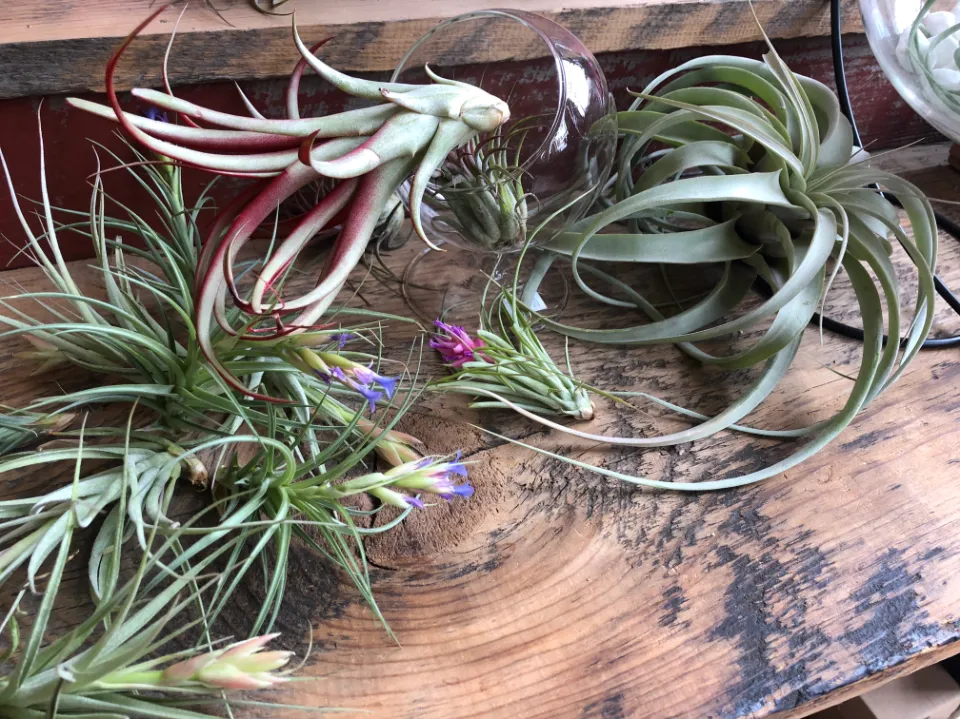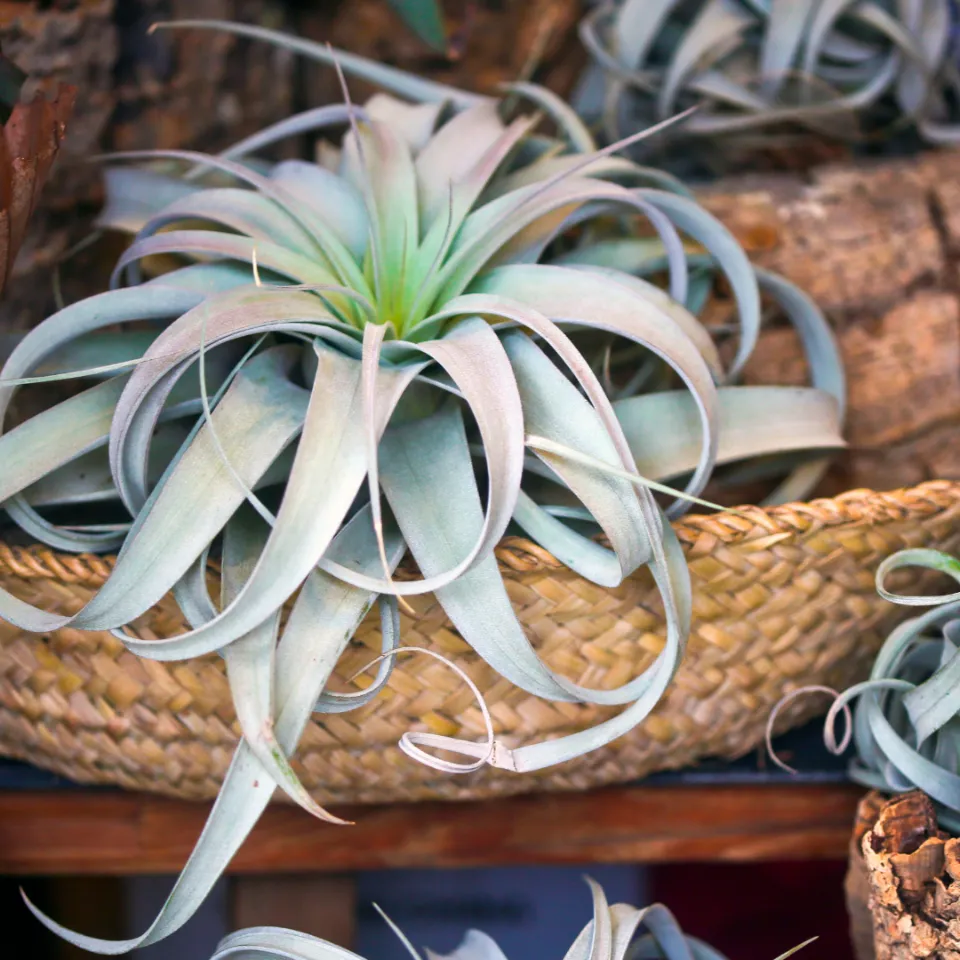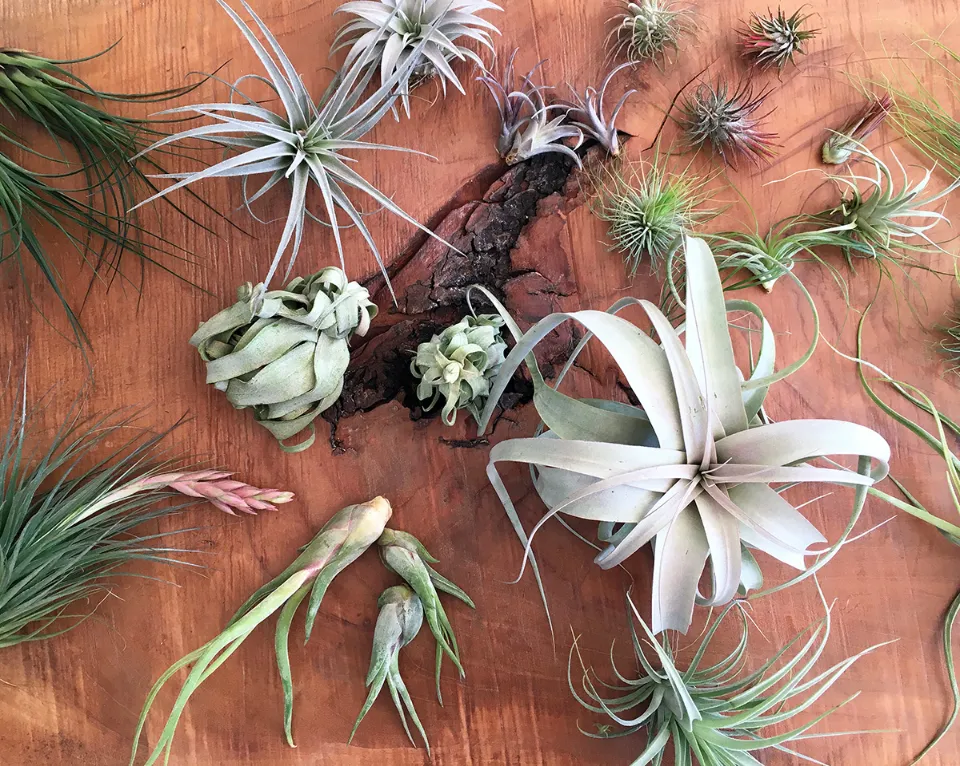How Long Do You Soak Air Plants? Below will give you advice on how to soak air plants. Please read on.
Air plants can be kept well-hydrated by soaking them for 15 to 30 minutes in clean, lukewarm water. Tillandsias that have been neglected for a long time can be severely dehydrated by soaking them overnight. In order to avoid rot, air plants must always be completely drained after watering.
Keep reading.
Table of Contents
How to Soak Air Plants?
It’s surprisingly easy to soak air plants. A bowl and some fresh water are all that are required. If possible, I suggest using rainwater, but distilled or filter water will work just fine.
Place your air plant in your bowl upside down after adding water to the bowl. Give it a few good swirls in the water to get rid of any debris or leaf bubbles, then set it aside to soak. 15 to 30 minutes is perfectly fine.
The Tillandsia should be removed after its bath, turned upside down, and left to drain. It’s easy for water to get trapped between the leaves, where mildew or fungi frequently move in and cause your air plant to rot.
Once the air plant has dried, you can reposition it. Most types of air plants don’t require more water than once or twice per week, but some species enjoy it occasionally. It’s not a bad idea to mist in between soaks if the weather is hot.

Why You Should Soak Your Air Plant?
- Natural
Air plants are technically a type of bromeliad, a family of plants that have evolved to use their leaves to draw nutrition and moisture from the world around them. Their leaves are covered in fine hairs called trichomes that draw moisture and dust from the air. Once they have been captured, the air plant has the ability to absorb them, rehydrating and feeding themselves.
Despite the fact that it may seem strange, soaking makes use of Tillandsias adaptations to help the plant absorb water in a way that is typical of the genus.
- Easy
When you soak an air plant, not much messing around is necessary. Simply dunk them and then leave them is all that is required. Other methods of watering require specialized equipment, such as plant misters, or put your Tillandsia at risk of injury from chilly, subpar tap water. If your looking for an even more care free experience try keeping your air plants in a bathroom, the heavy humidity will work wonders to keep them hydrated.
You can give your air plant exactly the right amount of water it needs to soak if you have a bowl and some clean water on hand. Though rainwater is ideal, I usually just use tap water that has been passed through a filter jug. My air plants can drink it as well if it’s safe for me to do so.
- Effective
Indoor plants are frequently killed by overwatering; in fact, I’d say that nine out of ten times when I’ve been asked to evaluate a dying houseplant, the cause has been too much water drowning the plant from the root up. Under watering the rest of the time. Even the most experienced gardener occasionally makes mistakes when watering plants, despite the fact that there are countless how-to articles on the subject, including this one.
Tillandsia is completely protected from watering issues by soaking. They are literally swimming in everything they could possibly need, so you can’t submerge them. The same applies to overwatering them. Only what they require will be absorbed.

Should You Soak a Dehydrated Plant Longer?
People always follow up with, “Should I soak my air plant for longer if it seems a little dried out?”
Typically, the answer is no.
The best thing to do is soak your air plant for the recommended 20 minutes if you suspect it is dehydrated. Soaking it for longer may induce root rot, fatal for air plants.
Instead, you should soak it twice weekly or supplement the plant with a regular misting schedule.
Root Rot is a Common Killer When Soaking
Root rot is one of the main causes of air plant death. When a plant’s roots are immersed in water for an excessive amount of time, root rot results, which causes the roots to decompose and rot.
To avoid root rot, shake excess water from the plant once it has finished soaking. Additionally, only soak your air plant as often as necessary to keep it healthy – don’t soak it just for the sake of soaking it.
The Natural Habit of Air Plants
As the name implies, air plants grow in the air – often on the sides of trees or other plants. Because they are epiphytes, they have scant or no roots. The majority of their nutrients and moisture are instead obtained from the air around them, as well as from regular rainfall.
For instance, a lot of air plants originate in Guatemala, which experiences more than 5 inches of rain per month from May to October.
As opposed to this, air plants from arid areas like Peru don’t typically receive rain on a regular basis. Instead, they must make due with the moisture in the air and any sporadic rain that may fall throughout the year.

Common Questions
Can You Soak Air Plants Too Long?
Yes, your air plant will die if you soak it for a long enough period of time.
Should You Place Your Plants Upside Down When Soaking?
You don’t have to stand your air plant on its side to soak it. However, if you have an air plant that does not have a bulbous base, you may want to place it upside down so that the water can be evenly distributed throughout the plant.
Can You Rescue An Air Plant That Experienced Root Rot?
It’s unfortunately very challenging to revive an air plant once it has root rot. If anything, try putting the air plant somewhere drier and seeing if it can survive. A plant suffering from root rot has a very slim chance of recovering, though.
Summary: How Long Do You Soak Air Plants?
When watering air plants that are in bloom, be careful not to get the flower itself wet. While it would be acceptable to soak the plant’s bottom leaves, we frequently advise running water over them or dunking them to avoid wetting the flower. An extended period of wetness on the flower can lead to rot, which could eventually spread to the leaves and kill the plant.
If you have any questions, please leave a comment. Don’t forget to share the post. Thank you for reading.













